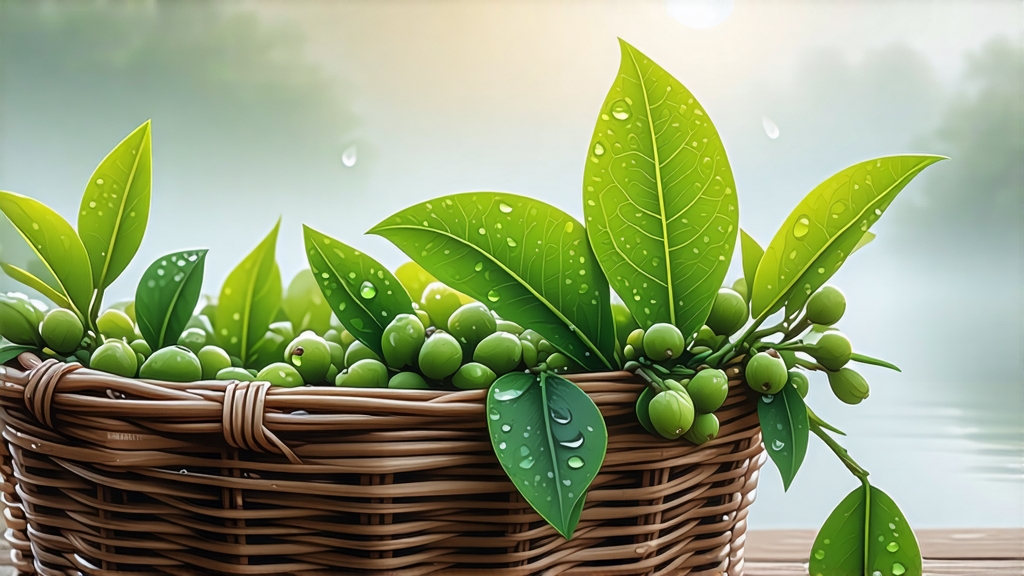
Among the pantheon of Chinese green teas, none carries a name as poetic or a leaf as diminutively elegant as Biluochun. Literally “Green Snail Spring,” the tea is prized for its tight spiral shape, downy silver tips, and a fragrance so naturally sweet that Emperor Kangxi is said to have rechristened it on the spot when he first tasted it in 1699. Originally known by the humbler moniker “Xia Sha Ren Xiang” (“Scary Fragrance”) because its perfume startled villagers, Biluochun has since ascended to the summit of China’s Ten Famous Teas, yet it remains modestly rooted in the mist-locked hills of Dongting Mountain beside Taihu Lake in Jiangsu Province.
History and Legend
The recorded history of Biluochun begins in the late Ming dynasty, when tea monks at the Biyun Temple on Dongting’s East Peak noticed that wild tea bushes growing among peach, plum, and apricot trees produced leaves of extraordinary aroma. Local lore claims that tea pickers could smell the leaves before they saw them, and that the scent lingered on their fingers for days. When Kangxi visited Suzhou in 1699, magistrate Song Luo presented the tea. The emperor, struck by its curling shape and jade color, declared the new name Biluochun, fusing “bi” (green), “luo” (spiral shell), and “chun” (spring). The imperial endorsement catapulted the tea into national fame, and by the Qing dynasty it was already freighted with tribute status, transported northward in bamboo-leaf-lined chests along the Grand Canal.
Terroir and Cultivar
Dongting Mountain is actually two islands—East and West Dongting—rising from the vast Taihu Lake like a pair of green lungs. The lake’s microclimate traps vapor that condenses into perpetual fog, filtering sunlight into a soft, diffused glow ideal for slow photosynthesis. Daily temperature swings of 8–10 °C concentrate amino acids, especially L-theanine, which translates into the tea’s hallmark umami sweetness. The soil is acidic, a sandy loam rich in quartz and iron washed down from weathered granite. Two indigenous cultivars dominate: the small-leaf “Dongting Qunti” (heirloom bush) and the cloned “Dongting #7,” selected for higher fragrance. Only leaves picked within a 12-km radius can claim the coveted “Original Origin” label, a geographic indication enforced since 2002.
Harvest Calendar
The picking window is brutally short. Pre-Qingming Biluochun, plucked before the solar term “Qingming” (around April 5), represents fewer than 5 % of total yield yet commands half the annual market value. A skilled picker gathers 60,000 buds—each one just unfolded and still soft as velvet—to make 500 g of finished tea. The ratio is eight hours of nimble finger work for one leisurely pot. Second flush, picked before “Grain Rain” (April 20), retains fragrance but loses some delicacy. Anything later is relegated to local consumption or scented blends.
Crafting the Spiral
Unlike flat Longjing or needle-shaped Liuan Guapian, Biluochun is shaped entirely by hand in a hot wok that never leaves the ground. The process is condensed into four Chinese verbs: “sha qing” (kill-green), “rou nian” (roll-twist), “cuo tuan” (rub-ball), and “ti hao” (raise-down). First, 180 °C wok temperatures flash-halt oxidation, preserving chlorophyll’s jade hue within 90 seconds. Immediately the temperature drops to 80 °C; the master presses leaves against the wok with a bamboo brush, rolling them into tight cords. The critical “rub-ball” step sees the maker cup a palmful of leaves and swirl them in a figure-eight motion, coaxing the distinctive spiral while white down clings to the creases. Finally, a gentle 60 °C drying sets the shape and reduces moisture to 5 %. Throughout, the artisan listens for the sound of leaves clicking like jade beads—an acoustic cue that moisture is evacuating evenly. The entire firing lasts 35 minutes, after which the leaves rest overnight in linen bags to stabilize aroma before final sorting.
Chemical Signature
Gas chromatography reveals a heady mix of 42 volatile compounds. The most emblematic are geraniol and β-ionone, lending peach-skin and orchid nuances. Downy